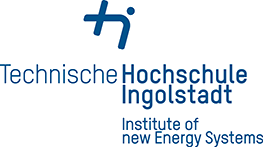Implementing the University of Applied Science Concept at the Technical University of Kenya
+254 (0) 20 . 3343. 2672
Web Profile
Introduction
The implementation of a new idea is always fraught with challenges the first being resistance to change amongst Students, Faculty as well as Management, the second being capacity and the third being logistical . Any thing that ‘upsets’ the status quo generates skepticism and its introduction must be handled with great care to avoid failure at the start.
The Technical University of Kenya (TU-K) was established as a Technical University in line with the provisions of the Universities Act, 2012. Technical University is a new type of university in Kenya, whose mandate is to offer higher education and research in technology with the specific focus on the application of knowledge.

Comparing the above definition with the characteristics of a University of Applied Science (UAS), I see a lot of similarities in that Universities of Applied Sciences (UAS) generally have the mission to train professionals with emphasis on labour market needs and conduct research and development which supports instruction and promotes regional development in particular. The UAS approach emphasises co-operation with the business, industry and service sectors at the regional level in particular.
My Idea
Historically, the creation of technical universities in Kenya aimed at driving the general economic development of the nation towards the attainment of Vision 2030 through the use of technology and the sustenance of a technologically vibrant economy. This concept was borrowed from empirical experiences in most technologically developed countries and upon the realization that technological development is best propelled through education, training, and research at technological universities. The Technical University of Kenya has was established as one of the first universities of this type in Kenya. However, staff we not sensitized on the uniqueness and characteristics of such a new University and the recruitment was done among staff working in what we would call traditional universities. This has tended to water down on the original idea as enshrined in the University’s Vision and Mission.
To this end, I found a need to begin sensitizing University staff and students on the advantages of a University of Applied Science whose concept very much mimics the original idea behind the creation of the Technical University of Kenya.
Ensuring individual free and informed decision‐making for participation is a challenging endeavour. It is thought that preliminarily informing faculty through sensitization procedures may improve individual decision‐making hence appreciation of an idea. This approach may be conducted at both individual (bottom – up) and institutional (top – down) levels. while the approach assures success, the results may not be immediate and the approach requires heavy investment in terms of time and effort. My Idea of sensitization was a mixed approach that involved:-
(i) providing sufficient information;
(ii) inculcating competence, (i.e. creating the capacity to understand relevant information);
(iii) encouraging free choice (i.e decision making in the absence of coercion or deception);
(iv) facilitating the comprehension of a UAS concept.
Challenges and Mitigation Measures
- Undefined Goals
- Scope Changes
- Inadequate Skills for the engagement
- Improper Risk Management
- Poor Communication
- Impossible Deadlines
- Resource Deprivation
- Lack of Stakeholder Engagement
The implementation strategy was to involve the team trained at Neu-Ulm and THI.
Goal: To create a culture change leading to the adoption of the UAS model in TUK.
Scope: Individual and Institutional level. Clearly define the scope to avoid ‚scope creep‚!
Skills: Inculcate relevant skills through training sessions and workshops
Risk Mitigation: Required documentation of the core set of skills needed to accomplish the workload and analyze the strengths and weaknesses of co-opted members. If need be, train them to enhance their knowledge and end the skill gaps.
Communication: The team opted to communicate through reports and presentations as a way of creating first impressions in terms of appreciation. Individualised ‚one on one‚ discussions were also encouraged.
Timelines: Setting of times lines presented challenges in that is much depended on the appreciation levels of the different cadre of stakeholders.
Resources: Finances are a key resource in every venture but while acknowledging lack of the same, the team undertook not to overly commit the institution, in the hope that once there is institutional buy in, then Management would commit to funding some of the activities that would go towards actualising and institutionalising the concept.
Stakeholders: The team identified the key stakeholders as the students, Faculty, University Management, Industry and the government and defined the role of each in the implementation process.
Implementation – student level
Providing real life solutions:
During the learning process, there is need to take into account cognitive processes
involved. It can be rightly argued that interacting with technology is in itself cognitive because it provides knowledge about what learners can and
cannot be expected to do. It also identifies and explains the nature and causes of problems users encounter.
Students therefore must be exposed to modelling tools, guidance and methods that can lead to the design of better interactive products.
Examples currently being undertaken in TU-K are as follows:-
Spare Part Manufacture
Tasks: Design of Jigs and Fixrtures, Machining, Costing and reporting
Additive Manufacturing
Tasks: Design of FDM Printer, Fabrication, Testing and reporting.


Leave A Comment